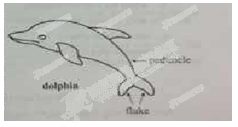(11分)氯化钠是生活必需品,也是重要的化工原料。提纯含少量泥沙的粗盐,一般经过以下操作流程:

(1)操作①中必须用到的一种仪器是 (填序号)。
A.研钵 B.量筒 C.烧杯 D.试管
(2)小燕完成该实验部分操作过程如图所示,其有明显错误 (填字母序号)。

(3)操作⑤中容易造成食盐固体飞溅,为尽量减少飞溅,除连续搅拌外还可采取
等措施。
(4)实验结束后称量获得的精盐,并计算精盐的制得率,发现制得率较低,其可能原因是 (填序号)。
A.食盐没有全部溶解即过滤 B.蒸发时食盐飞溅剧烈
C.蒸发后,所得精盐很潮湿 D.器皿上沾有的精盐没全部转移到称量纸上
(5)小燕查阅相关资料得知:粗盐中除含泥沙等不溶性杂质外,还含有少量的MgCl2、CaCl2等可溶性杂质;为了得到较纯净的氯化钠,小燕将除去泥沙的“精盐”又作了如下处理(假定杂质只有MgCl2、CaCl2两种):

①提供的试剂:Na2CO3溶液、K2CO3溶液、NaOH溶液、KOH溶液、饱和NaCl溶液。
从提供的试剂中选出a所代表的试剂是 、 。
②在滤液中加盐酸的作用是 、 (用化学方程式表示)。
(6)井水中也因为含有较多的MgCl2、CaCl2而不能直接饮用,上海世博园内安装的“直饮水”机,采用“活性炭+超滤层+紫外线”净水工艺。活性炭在此起 作用。
(7)已知硫酸钠的溶解度随温度变化的曲线如右图所示。40℃时,100g蒸馏水中溶解 g
硫酸钠达到饱和。将该饱和溶液升高温度至90℃,
观察到的现象是 。

(1)A (2)AC (3)间歇加热(或“来回移动酒精灯或蒸发皿”)
(4)ABD (5)①NaOH溶液、Na2CO3溶液
②HCl+NaOH=NaCl+H2O 2HCl+Na2CO3=2NaCl+CO2↑+H2O
(6)吸附 (7)50 有固体析出
题目分析:(1)操作①将大颗粒的粗盐变为较细的粗盐,所以操作应为研磨,必须用到的仪器是研钵。应选A项。
(2)A中瓶塞没有倒放在桌面上,C中未用玻璃棒搅拌;所以应选AC。
(3)蒸发时,如局部温度过高会造成液体因受热不均而飞溅;除搅拌外,还可通过间歇加热(或“来回移动酒精灯或蒸发皿”)等方法来控制液体温度局部过高。
(4)A.食盐没有全部溶解即过滤会使得到的食盐减少,符合题意;B.蒸发时食盐飞溅剧烈,会使得到的食盐减少,符合题意;C.蒸发后,所得精盐很潮湿会使称得的质量偏大,不符合题意;D.器皿上沾有的精盐没全部转移到称量纸上,会使得到的食盐减少,符合题意;所以应选ABD。
(5)①为了得到较纯净的氯化钠,需要加入的物质能除去MgCl2、CaCl2;可用NaOH溶液与MgCl2反应生成氢氧化镁沉淀和氯化钠;可用Na2CO3溶液与CaCl2反应生成碳酸钙沉淀和氯化钠;然后再通过过滤除去生成的两种沉淀,加入盐酸调节溶液的PH为7即可。所以a所代表的试剂是NaOH溶液和Na2CO3溶液。
②为了完全除去MgCl2、CaCl2;加入的NaOH溶液和Na2CO3溶液需要过量;所以在滤液中加盐酸是为了除去过量的NaOH和Na2CO3;反应的化学方程式为:HCl+NaOH=NaCl+H2O、2HCl+Na2CO3=2NaCl+CO2↑+H2O。
(6)活性炭具有疏松多孔的结构,有较强的吸附性,可用于净水过程中吸附水中的异味和色素,起吸附作用。
(7)根据图像可知:40℃时,硫酸钠的溶解度为50g。即在40℃时,100g蒸馏水中溶解50g硫酸钠即达到饱和。
将该饱和溶液升高温度至90℃,原来的溶质会因硫酸钠的溶液度减小而析出。所以可观察到有固体析出。

